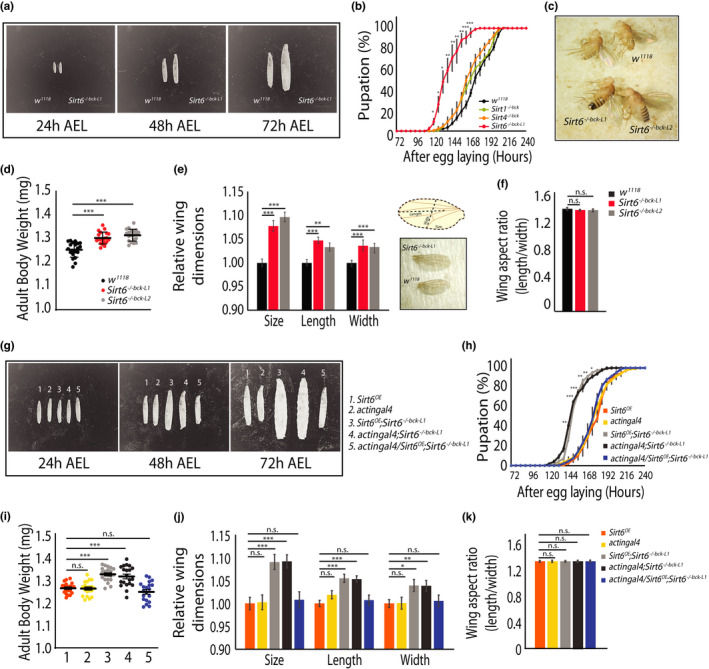FIGURE 1.

Loss of Sirt6 causes accelerated larval development and adult hypertrophy in Drosophila. (a) Larval body size at 24, 48 and 72 h post‐synchronised egg laying. w1118 (control) and Sirt6−/−bck−L1 larvae were imaged at 12.5× magnification. (b) Percentage pupation in backcrossed Sirt1−/− bck , Sirt4−/− bck 4 and Sirt6−/−bck−L1 larvae compared to w1118 flies (N = 3, n = 150–200). (c) Representative image of 3–5 day old w1118 and Sirt6−/−bck−L1/2 flies. (d) Body weight measurement in w1118 and Sirt6−/−bck−L1/2 flies (N = 3, n = 20–25 per genotype). (e) Relative wing dimensions in w1118 and Sirt6−/−bck−L1/2 flies (N = 3, n = 20–25). (f) Wing aspect ratio in w1118 and Sirt6−/−bck−L1/2 flies, as computed from (e). (g) Larval body size at 24, 48 and 72 h post‐synchronised egg laying in the following genotypes: 1‐Sirt6OE , 2‐actingal4, 3‐Sirt6OE ; Sirt6−/−bck−L1 , 4‐actingal4; Sirt6−/−bck−L1 and 5‐actingal4/Sirt6OE ; Sirt6−/−bck−L1 . (h‐k) Genetic rescue of Sirt6 restores early pupation (H), body weight (I), wing dimensions (J) and wing aspect ratio (k) phenotype (N = 3, n = 20–25 per genotype). All data presented are mean ± SEM Asterisk depicts p values (*p < 0.05, **p < 0.01 and ***p < 0.001) as observed by Student's t‐test and two‐way ANOVA, as applicable
